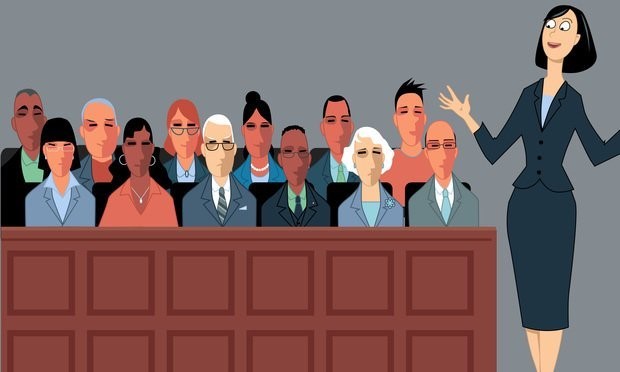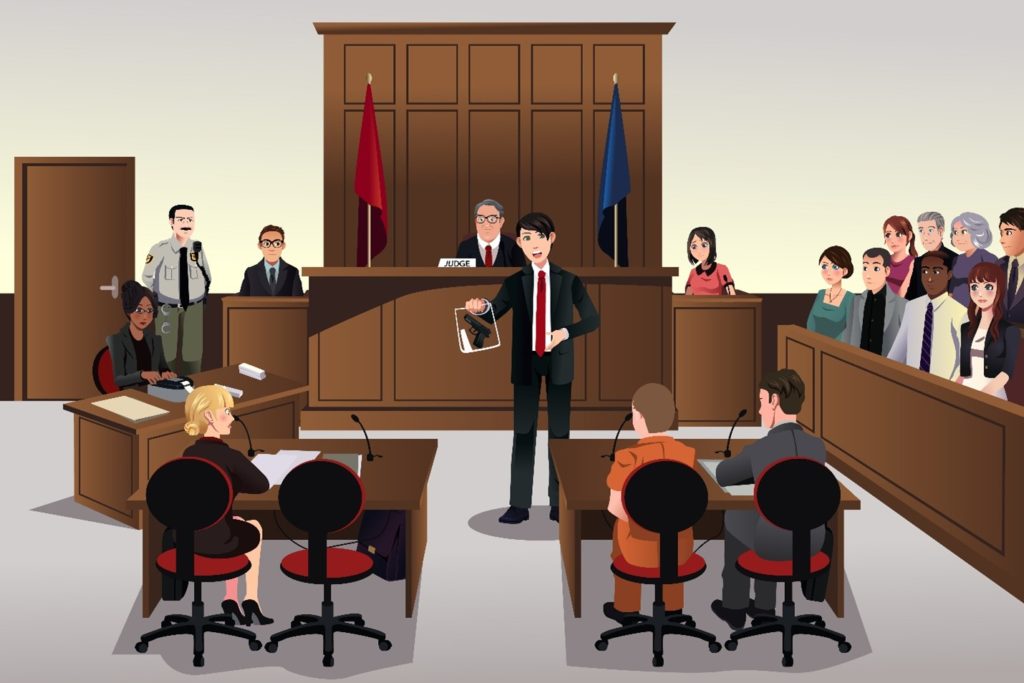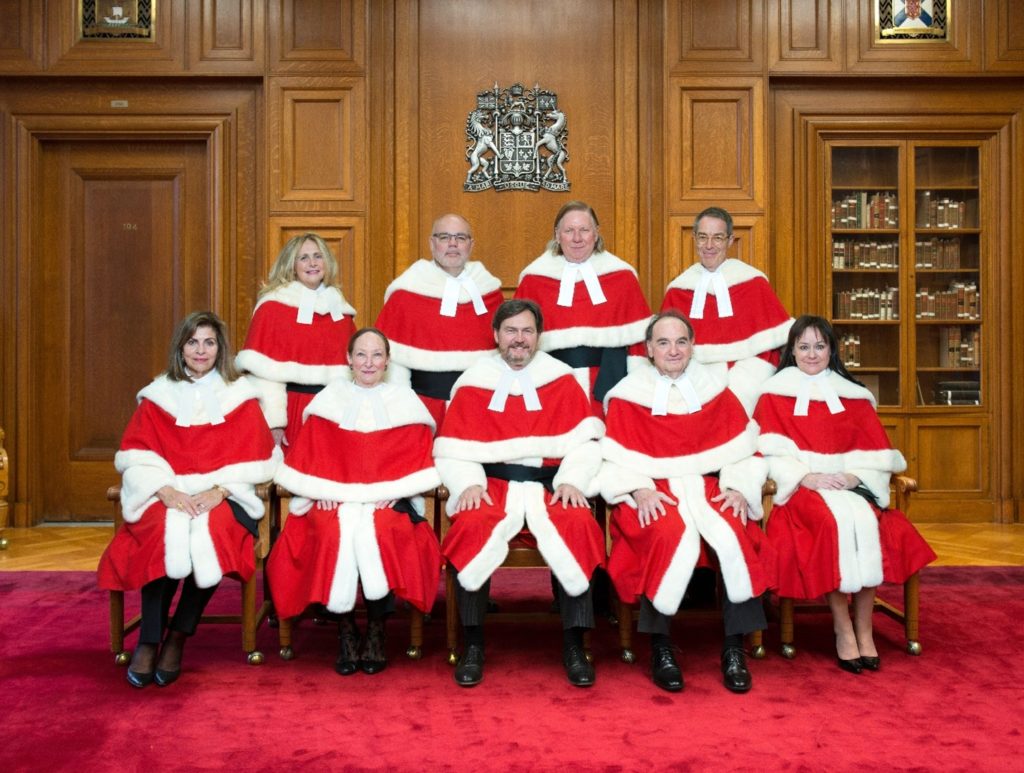BLOG
Jury Peremptory Challenges Are Not Retroactive
Cory Wilson is a criminal defence lawyer serving Calgary, Okotoks, Airdrie, Strathmore, Cochrane, Canmore, Didsbury, Medicine Hat, Lethbridge, Grand Prairie and Turner Valley.

In 2019, the Liberal government passed legislation banning peremptory challenges – a move that allows lawyers to reject a potential juror without giving any explanation. The following year, the Supreme Court of Canada upheld the legislation ruling it constitutional.
In the 2021 case of R v Chouhan, the question before the Supreme Court was whether the legislation applied retroactively. The accused’s jury trial began on September 19, 2019, the day legislation that abolished peremptory challenges came into force. The accused argued that the abolition violated his s. 11(d) and 11(f) Charter rights, and also that the change only operated prospectively and did not apply to his trial. The trial judge, McMahon J., rejected both arguments, and the trial proceeded. The accused was found guilty. The accused renewed his arguments at the Ontario Court of Appeal, which found that the amendments were constitutional but ordered a new trial on the basis that the amendments affected the accused’s substantive rights and therefore only applied prospectively. The Crown appealed the finding that the amendments applied prospectively, and the accused cross-appealed the finding that the amendments were constitutional.
The nine Supreme Court justices delivered five judgments among them. Ultimately, the Crown’s appeal was allowed, and the cross-appeal by the accused was dismissed. The Court found that the amendments did not violate the Charter and that they applied retrospectively to the accused’s trial.
Justices Moldaver and Brown wrote for themselves and Chief Justice Wagner. The focus of their Charter analysis was s. 11(d) of the Charter, which they held did not entitle the accused to any particular procedure. The question was whether a reasonable person, fully informed of the circumstances, would consider that the new jury selection process, which lacked peremptory challenges, gave rise to a reasonable apprehension of bias, so as to deprive accused persons of a fair trial before an independent and impartial tribunal. This question required consideration of the constitutionality of the jury selection process as a whole, including those aspects of it that were unchanged and those that were modified in tandem with the abolition of peremptory challenges. Those procedures included measures to create a jury roll that was a cross-section of society and to provide for random selection of potential jurors from that roll, as well as robust participation by the trial judge and the parties in ensuring the impartiality of those who ultimately served on the jury, even in the absence of peremptory challenges. This included unlimited challenges for cause by the parties and the ability of the trial judge to excuse jurors. Even in the absence of peremptory challenges, these procedures collectively ensured that each accused received a fair trial before an independent and impartial jury. The test was based on an objective standard, not on the subjective perceptions of the accused. Further, there was no requirement that there be diversity on the jury, or that characteristics of the accused or the victim be represented among jurors. In any event, they held, the abolition of peremptory challenges was likely to reduce the homogeneity of juries since they have often been used to undermine diversity.
In addition, other measures surrounding the jury selection process allowed the parties to raise and address concerns about juror partiality and bias. Inappropriate cases, trial judges should consider crafting jury charges and mid-trial instructions that cautioned against the risk that bias, racial or otherwise, would taint the integrity of the jury’s deliberations. Instructions could alert jurors to unconscious biases and would be appropriate wherever specific biases, prejudices, and stereotypes might reasonably be expected to arise. Trial judges should consider giving general instructions on biases and stereotypes, as well as for instructions on specific biases and stereotypes that arise on the facts of the case. General instructions should alert jurors that it is common to make unconscious assumptions based on characteristics such as gender, race, ethnicity, sexual orientation, or employment status and that they should approach their task with self-consciousness and introspection in order to identify and set aside prejudices or stereotypes in reaching a verdict. Specific biases or stereotypes could arise in any number of contexts, and so trial judges should identify the characteristics of the parties or the witnesses that gave rise to the risk of unconscious bias, dispel common stereotypes, and direct the jurors to decide the case with an open mind based on the evidence before them.

The challenge for cause procedures also addressed concerns about partiality. The accused person or the Crown must merely demonstrate a reasonable possibility that bias or prejudicial attitudes existed in the community that could taint the impartiality of the jurors. In most cases, expert evidence would not be necessary, and challenges for cause would be available wherever the experience of the trial judge dictated that a realistic potential for partiality arose. Appropriate questions on a challenge for cause will relate to salient aspects of the case: for example, whether characteristics of the accused, complainant or victim, such as race, addiction, religion, occupation, sexual orientation, or gender expression, would cause the juror difficulty judging the case solely on the evidence and the trial judge’s instructions. However, in permitting such questions, trial judges must also be mindful of the fundamental principle of respect for jurors’ privacy upon which our system of jury selection has long been based. In addition, trial judges themselves should generally put the questions to jurors and should exclude other jurors during the selection process.
Finally, the expanded stand-aside power in the hands of a trial judge, which allows a potential juror to be stood aside for the purpose of maintaining public confidence in the administration of justice, would help protect against bias. This power could address residual concerns in the jury selection process, such as providing a means to exclude jurors whom the judge, the accused, or the Crown believe might be partial but who nevertheless survived a challenge for cause. Trial courts and courts of appeal would need to determine, on a case-by-case basis, the contours of this new discretion, but it could only be used for its stated purpose of maintaining public confidence; it was not a means to actively promote jury diversity. It was not clear in principle what promoting diversity would mean, and trying to do so would raise a host of practical problems. Jury representativeness and impartiality do not require diversity among the members of the petit jury, and the stand-aside power should not be used for that goal.
Because of all those protections, the jury selection process guarantees the independence and impartiality of the jury, and so there was no violation of s. 11(d) of the Charter. There was also no violation of the s. 11(f ) Charter right to an impartial jury and a representative jury. The guarantee of impartiality in s. 11(f ) was the same as that in s. 11(d), and the notion of “representativeness” in s. 11(f ) did not entitle the accused to proportionate representation at any stage of the jury selection process. Accordingly, the abolition of peremptory challenges did not violate the Charter.
Legislation that affects substantive rights is presumed to be prospective, while procedural legislation is presumed retrospective. Broadly, procedural amendments alter the method by which a litigant conducts an action or establishes a defence or asserts a right, while substantive amendments attach new consequences to past acts, change the content or existence of a right, defence, or cause of action, or render previously neutral conduct criminal. Here, the changes did not infringe the accused’s Charter rights. Further, even if there were a substantive right to participate in the selection of one’s jury, the changes only affected the way in which that right was exercised. The presence or absence of peremptory challenges did not affect the accused’s right to a fair trial by jury, and therefore the change was only procedural and applied retrospectively.
Justice Martin, with Justices Karakatsanis and Kasirer concurring, agreed with the conclusion of Moldaver and Brown JJ. that the removal of peremptory challenges was constitutional and that the changes were procedural in nature and applied immediately to ongoing proceedings. They also agreed that there is a need for jury instructions concerning bias. However, Justices Martin, Karakatsanis, and Kasirer felt that the amended stand-aside power and the scope of the challenge for a cause raised questions that were complex and multifaceted and should not be decided at this time. Although Moldaver and Brown JJ. had rejected the use of the stand-aside power to increase the likelihood that jurors from certain marginalized groups would be chosen to sit on the petit jury, the absence of those groups was something that would concern a reasonable, well-informed member of the community who would be aware of long-standing concerns about inadequate Indigenous representation on juries and the resulting impacts on public confidence. Practical challenges would arise in using the power to address that issue, but they should not be overstated. In any event, however, that question was immaterial to the outcome of this appeal, and so the question of whether and to what extent the stand-aside power could be used to enhance jury diversity should be left to another day. Similarly, the scope of questioning on challenges for cause had not been directly raised, and so the preferable process would be to wait before attaching limits to that power.
Justice Rowe adopted the reasons of Moldaver and Brown JJ. but expanded on one issue. In his view, it was important to note that constitutionalizing the specific statutory provisions by which Parliament gives effect to constitutional rights was misguided and that courts could not substitute their policy preferences for those of the legislature. Courts are limited to deciding whether constitutional protections have been infringed; constitutionalizing statutory regimes and thereby preventing legislatures from modifying or repealing them would be contrary to the separation of powers. Further, constitutionalizing particular statutory provisions would be inconsistent with Parliamentary supremacy, since it would limit the ability of Parliament to legislate as it so chooses.
Justice Abella dissented in part. She also felt that the abolition of peremptory challenges did not violate s. 11(d) or s. 11(f ) of the Charter because other measures could be used by trial judges to ensure impartiality and representativeness. These measures included a more robust challenge for the cause process, which required more probing questions than had traditionally been asked to screen for subconscious stereotypes and assumptions. They also included the use of the expanded stand-aside power to actively promote jury diversity on a case-by-case basis. Despite concluding that the change was constitutional, Justice Abella found it was one that affected substantive rights and therefore did not apply retrospectively. Peremptory challenges had been part of the right to trial by jury for centuries. They had been a defence tool to screen out the unsympathetic or to influence the racial or gender composition of the jury and had been a significant trial mechanism for accused persons to meaningfully participate in the selection of the individuals who would judge their case. They ensured that accused persons were given a substantive role through having a meaningful opportunity to have their own subjective views about the impartiality of the jury respected. They were also an important trial safeguard for an accused to try to secure representativeness from what could be unrepresentative random selections. An informed person would understand the history of discrimination faced by disadvantaged groups in Canadian society, recognize widespread and systemic racism, and account for diverse realities, and would take into account the perspective of a non-white accused person facing the prospect of trial by an all-white jury. An informed person might reasonably lose confidence in the criminal jury system unless there were safeguards to guarantee that juries will be impartial and representative. Peremptory challenges were such a safeguard and abolishing them diminished the right of accused persons to meaningfully participate in jury selection and to influence the ultimate composition of the jury. Their abolition affected the substantive rights of an accused to participate in the selection of an impartial and representative jury. As a result, the changes did not apply retrospectively, and the accused should have been allowed to make use of peremptory challenges at his trial. That error could not be saved by the curative proviso, and so a new trial needed to be ordered.
Finally, Justice Côté dissented on both issues. She focused on s. 11(f ) of the Charter, which guarantees the right to the benefit of trial by jury, rather than s. 11(d). The benefits of a trial by jury, she found, consist of having a superior fact-finding ability, being the conscience of the community, being a bulwark of liberty, and having an educative and legitimizing effect. To provide these benefits, the jury must be impartial, representative, and competent. Peremptory challenges were crucial to achieving each of these characteristics. They served impartiality because they enabled an accused to strike at hidden, subtle, and unconscious biases that challenge for cause miss. An accused, especially one from a racialized or marginalized community, cannot rely on a judge to excuse or stand aside from such a potential juror because it can be difficult for anyone to clearly articulate why they perceive bias. In Justice Côté’s view, the very fact that Justices Moldaver and Brown found it necessary to propose other measures to improve impartiality in the absence of peremptory challenges demonstrated that the abolition of peremptory challenges left a void in accused persons’ protections against partial juries. Peremptory challenges also served the goal of representativeness: the uncontested evidence before the trial judge indicated that peremptory challenges were used by racialized persons to attempt to impanel more diverse juries. Peremptory challenges also served competence. If a jury were composed entirely of members whose life experiences fundamentally differed from those of the accused, then the jury might not have the common sense necessary to be a superior fact-finder and would be poor judges of credibility. When combined, the erosion of the protections of impartiality, representativeness, and competence meant that the benefit of trial by jury was rendered uncertain, and so the accused’s s. 11(f ) Charter right was violated.

That violation was not a reasonable limit. The goal of the legislation was to reduce discrimination and increase diversity on juries, which was a pressing and substantial objective. However, abolishing peremptory challenges was not rationally connected to that objective, because it had the effect of furthering discrimination against racialized and other marginalized persons and potentially reducing jury diversity. It was also not minimally impairing since there was the alternative of empowering judges to regulate the use of peremptory challenges and ensure that they were not used in a discriminatory way. The violation of s. 11(f ) of the Charter could therefore not be saved.
Justice Côté also concluded that, even if the legislation had not violated the Charter, it should not apply retrospectively. The principle that procedural changes are presumed to apply retrospectively is premised on the idea that purely procedural changes tend to have neutral or positive effects. However, the abolition of peremptory challenges was entirely detrimental to the accused, and its immediate application created unfairness for those who had relied on the existence of such challenges to make decisions. Peremptory challenges served the goal of reducing bias, which was demonstrated by the new measures proposed by the majority to protect impartiality given the absence of peremptory challenges, and therefore their abolition affected substantive rights. The accused should have been permitted to use peremptory challenges, and this error could not be saved by the curative provision.
Cory Wilson is a criminal defence lawyer based in Calgary. If you have been charged with a criminal offence or are a suspect in a criminal investigation, call today for a free, no-obligation consultation.